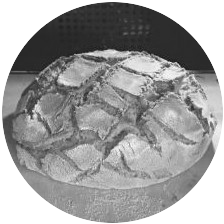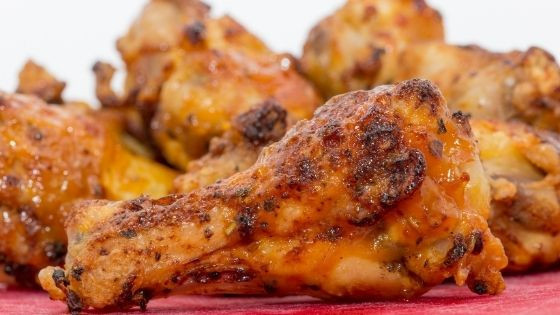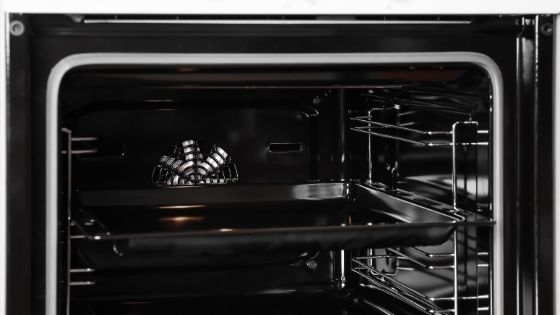Air frying ovens are pretty cool but how do air fryer ovens work? It’s something we have looked into extensively so you don’t have to. It’s a simple concept that is similar to how a standard convection oven works.
The biggest and most notable difference is the presence of a high speed fan. The fan circulates heated air to ensure even cooking on all sides. Even spacing is crucial for an air fryer to work as intended.
Does this make air fryer ovens and air fryer countertop ovens better than convection ovens and conventional ovens? No, unless you plan on air frying a lot in your kitchen. You see, these different types of ovens share similarities but differ in execution. Let’s get into the how.
Air Fryer Ovens as a Whole.
Each shares some basic capabilities.
Every air fryer has the ability to blow hot air evenly throughout the oven. Technically air fryers share the same feature as True or European Convection Ovens just with more power. You see, air fryers use a high-powered fan setting in order to circulate heated air evenly.
Without a doubt the most important aspect of an air fryer is that it’s heating elements work. They should be able to increase and decrease in temperature quickly. DO NOT use your hand to test this, use a thermometer if you can.
They all transfer heat onto food through convection. The exhaust system, the fan and heating elements work together to achieve this within the oven cavity. Heat is put in constant high speed circulating motion while air frying. It’s the premise of air frying without this, it’s just another convection oven.
What are Some Other Basic Features?
How do they function?
For baking, the heating elements will turn on and the fan will be shut off. This is to mimic the same results you can expect from a conventional oven. Conventional ovens do not include a fan for air circulation they only include a broiling element and a baking element for heating.
Broiling has become a standard in ovens for food that you would grill. When the broil elements are turned on they will radiate heat to cook food. This is why when broiling, it is necessary to turn food. You broil one side at a time.
Most air fryer ovens can dehydrate food. They are very well suited to dehydrate food. Dehydrating foods happens within the temperature range of 80-180℉ (27-82℃). Simply put, at these low temperatures the air circulation and heat is used to dry away water content from food.
Most air fryer ovens will include controls to adjust settings such as time and temperature range.
Is There any Difference Between Brands?
Each brand will have it’s own design.
Does this change how an air fryer oven functions?
Each brand and model are different in design and function. The set of features will usually differ in more ways than one. It all depends on the amount of control allotted through design and function.
It’s not just the logo that will change, many brands add their own twist on what an air fryer oven is. Cooking functions will vary based on what you can adjust in the oven and what you can set. The more control the more versatile as an appliance.
Materials used for construction and paint may vary. Most air fryer ovens are made with stainless steel or a type of mix and painted with a type coating both inside and out. Be sure to double check what it’s made out of, you’d be surprised how care and use can change just because of the material.
Surprisingly there is more to the functions themselves. How food is cooked is done with convection primarily. However, an air fryer can also cook food similar to how conventional and convection ovens do.
Difference Between Conventional, Convection and Air Fryer.
It’s in the heat transfer.

Conventional ovens cook food by having the heating elements radiate heat from the walls. This process allows the heat to transfer onto the food. Natural convection from temperature differences plays a lesser role in the process but nonetheless helps with the cooking process.
There are two types of convection ovens. Traditional or American and True or European convection. Traditional convection works similar to conventional ovens. The difference is the addition of a fan to help circulate air. True convection happens similar to how it happens in Traditional convection except there is a heating element behind the fan to help circulate heated air onto food.
As we have already gone over air frying works similarly to how true convection works. The difference is the high speed motion of the fan circulating heated air constantly. It’s quite amusing how each heating method works similarly but is executed slightly differently.
Depending on how much control owners have over the settings, an air fryer oven can utilize or emulate all three heating methods. Isn’t that wild. It’s something the marketing doesn’t really touch upon.
( ̿ ̿ ̿ ̿ ̿ ̿ ̿ ̿°̿ ̿ ̿ ̿ ̿ ̿ ̿ ̿ ͜ʖ ̿ ̿ ̿ ̿ ̿ ̿ ̿°̿ ̿ ̿ ̿ ̿ ̿ ̿ )
If you want to learn more about how heat is transferred in cooking be sure to visit Science Of Cooking’s post.
Is Air Frying a Must Have Feature?
Is an air fryer oven right for you?

Number 1 question! Do you even air fry or plan on air frying? It’s none of my business but if you are wondering if air frying is a must have feature it’s not. Keep in mind most recipes are intended for conventional and traditional ovens. If you plan on using convection heating or air fryer mode you might need to do some experimenting if it’s anything other than pre-made frozen foods.
Do you plan on air frying large portions (for 2-5 individuals) or small portions (1-2 individuals)? This is another matter to consider. If you don’t mind cooking in batches or you intend on cooking small portions then a countertop model might be right for you. If you plan on cooking large portions but don’t want to deal with batches or another countertop appliance perhaps a freestanding model is right for you. The only problem is they are more expensive than countertop models.
With that you also have to consider how much space do you have for an air fryer? Do you have room on the counter and or a place to store it? Do you plan on replacing your current oven?
All things to consider, when deciding if an air fryer is right for your kitchen. It’s good to know how something works but it’s also important to know what you can accommodate in your kitchen.
How to differentiate to find what best suits you.
Tell the difference between models and brands.
Models can be broken down by features and specs. There might be slight differences so it’s always good to double check between models and what your kitchen can handle. Never forget to check the dimensions!
Brands can be broken down by functionality and marketing. Sometimes the box or description of an air fryer oven can say a lot with a little about how it functions. There is only so much text you can fit on a box or description without boring people to death.
Overall the goal is to find a brand and model that lasts. An air fryer that fits in your kitchen and your cooking style is ideally what you want. You can prevent more E-Waste from landfills and avoid the headache of wasting time and money by picking an air fryer that will last you. One that best serves your style of cooking. We have a post on the best air fryer oven if you’re looking for a countertop model.
The only problem with this is that not every brand is available internationally. RIP, some people have a very limited selection to choose from.
If you want a little info on what’s the difference between European vs. American Convection check out Don’s Appliances’ video down below:
Hopefully all of this helps clear up how air fryer ovens work. How they can differ between brands. How they are similar but are different from conventional and convection ovens.
If you found this helpful leave a comment on how it helped out! If you have any relevant comments or questions feel free to drop them below.
Don’t forget to share and bookmark if you found this helpful! Thanks for reading.


I’m so happy to read your article. I have so many friends that seem to be asking about air fryers and ovens. I myself have tried a couple of different models. And I’ve tried meats, vegetables and even desserts. I myself as you also elude to in your article don’t find much difference then my convection oven other then of course the vastly shorter amount of cooking time. Which is the most significant pro especially living in a time where sooner is better then later. And with people staying home more I can see the benefit. All the best!
Love to hear it, glad you enjoyed! It’s so true, there are slight differences between different oven types (conventional, convection and air fryers) and time to cook is certainly one them. Even though there are differences, most are hardly noticeable while in operation. The end results might vary but not by much.
Totally agree with you on cooking with batches, I usually use the air fryer to cook my chicken wings and it it works fine as the portion is only for me but whenever I have guests, I can’t seem to cook a lot because it doesn’t cook as fine. I ended up having to heat up a longer time and after a few minutes come back to shuffle the position so they would cook evenly.
Yes Riaz, this is one of the few cases where size can make a difference 😏. Thanks for visiting!